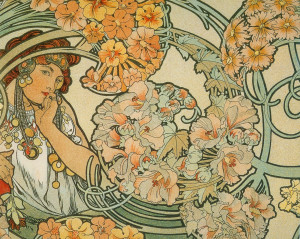
Mooka knew how to let his imagination bloom
My nurse friend sent me a link to a nursing journal article about Guided Imagery used as a valid nursing tool. I’m responding to this topic from a liberal arts point of view. I have healed from Guided Imagery experiences and happily share them with you, in hopes you will find them useful.
Theatre was a wonderful major in college, and I had a blast in those classes. So many opportunities to grow and develop various skills, writing, performing, directing, designing and constructing stage sets, working in the team spirit to accomplish deadlines. In my opinion, Liberal Arts majors like those of us in Theatre, can respect what we learned in our classes. For instance, in basic theatre classes, we learned to relax and concentrate with visualization exercises, and it was there I first learned about Guided Imagery.
Guided Imagery is one of many tools for strengthening the connections of mind, body and spirit, similar to creative visualization, used by many athletes to prepare themselves for competition. We train our minds to heal, and our imagination is the driver. By guiding ourselves through dreaming and affirming positive behaviors, we can also honor our souls, with tremendous healing outcomes. I’ve personally experienced abiding comfort recovering from my crazy past, using Guided Imagery and Visualization exercises. Here’s an example of what worked for me:
Imagine laying down, resting, eyes closed, breathing deeply. By relaxing our bodies, we concentrate our focus on each leg, arm and our neck, stomach. By breathing evenly, in and out, we slow down, which releases tension. Relaxation maximizes Guided Image effectiveness. As for actual images, picture a vivid place, with all the senses, including color and positive emotion. The more description the better, since detail helps unlock deeper consciousness, as if we are in that pictured place of our dream. If we include a couple of affirmations in our descriptions, it helps heal pain, guaranteed.
My experience with a psychologist and Guided Imagery helped me when I suffered from low self-esteem. While working on that, my psychologist described the Guided Imagery process like this:
She explained that the brain does not distinguish between real and imagined memory. Whether or not we have real or imagined negativity, it’s still loaded up inside us (picture a small pile of salt on a table). Guided Imagery artificially puts positivity (like shaking a salt shaker into another pile) enough to offset the negative pile. Eventually both piles will be same size. That’s healing, a contrived effective therapy. I thought, why not give it a try???
I wrote out a one-page script for my counselor to read to me. I described a tropical sands beach, gentle breeze, rustling palm leaves, smell of salt water and sweet grasses, peaceful surroundings, a quietly beautiful place, no plot, just serenity. My counselor told me to lean my head back on my chair and put up my feet, close my eyes. I felt sort of stupid, but that feeling didn’t last too long, when I started to relax. Then she read my script aloud. Her voice obviously sounded different than mine. I pictured the place and details differently with her voice. When I opened my eyes after about ten minutes, I felt better. There are also dozens of online websites willing to sell Guided Imagery scripts, if we don’t want to write them ourselves, and certainly they must be similar to what I wrote.
Most of my sessions with the psychologist were about facing personal issues that made me feel low, but the ten-minute Guided Images portions of those sessions relaxed me, and allowed me to be more gentle with myself, get into the groove of simply breathing and closing my eyes, picturing a beautiful place. I didn’t bother rewriting the script, since I liked the descriptions. She taught me how to focus on positive healing, what I needed to grow up more, since I had been hard on myself. My body’s tension reflected the pressure of my strain. My thinking had caused high blood pressure and weight gain as I got older, and was a useful tool to quit smoking.
As I understand Guided Imagery, it’s not hypnotic. I didn’t go into a trance or forget myself at all. It seems more like supportive rethinking. Let’s say, for a specific example, we want to use Guided Imagery to become more self-confident. The script could focus on positive encounters of self-confidence, demonstrating how patience or a more relaxed attitude, perhaps more personal respect, pausing when agitated, alleviates our conflicts. We can pretend self-confidence and use imaginary behavior, using affirmations like, “I know my intuition will help me deal with this situation.” We all know positive repetition strengthens affirmations, and makes a positive difference.
Remember The Little Engine That Could ? “I think I can, I think I can,” and that little engine overcomes the mountain. If that’s not Guided Imagery, than what is it?
This is a bit like what I am trying to deal with right now with my weight loss program. I am trying to not use food as a “reward” to myself, but use other things like a walk or a massage. It is best when I think about rewarding myself to stop going to food and take a walk instead. I read that if you do that for a month or so it becomes a habit and it is easier to keep it up. In many ways that is similar to guided imagery. Positive thoughts and or actions help bring change.